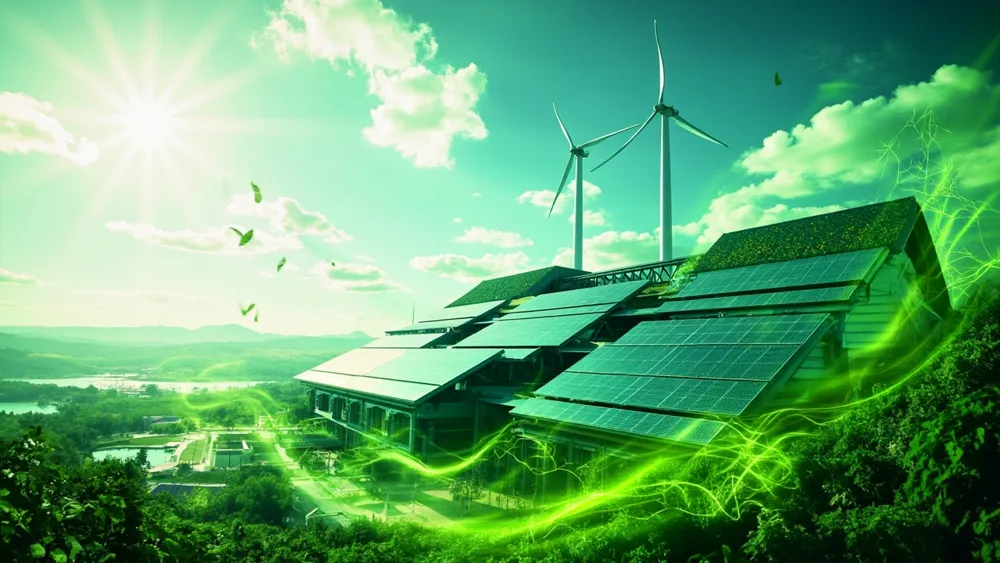US Nuclear Power Revival Highlights AI-Driven Energy Opportunities

The United States has recently reignited its interest in nuclear power as part of a broader strategy to meet the increasing energy demands driven by artificial intelligence (AI). This initiative, characterized as a "nuclear energy renaissance," is focused on the construction of new reactors aimed at fulfilling the electricity needs of burgeoning data centers associated with AI technologies.
In an effort to revive a sector that has seen decades of stagnation, executive orders were signed last month to pave the way for ambitious nuclear energy developments. These directives propose to quadruple domestic nuclear energy production over the next 25 years, although skepticism surrounds the feasibility of this goal. Experts emphasize that the United States currently has no operational next-generation reactors and has seen the establishment of only two new large reactors over nearly the last half-century.
The motivation behind such bold nuclear energy targets appears to be multifaceted, with increasing electricity demand from AI data centers being a significant influencing factor. As AI technology continues to evolve, experts note the strong interconnection between energy supply and AI development, indicating that a stable electricity supply is crucial for the future of AI advancements.
The impact of AI on the energy landscape is expected to be profound. Numerous industry insiders highlight that the demands of AI are driving not only increased energy consumption but also catalyzing improvements in sustainable energy technologies. Jensen Huang, the founder and CEO of NVIDIA, has pointed out the essential role electric utilities and infrastructure will play in the next industrial revolution, a transformation being spurred by AI and enhanced computational power.
A report by the Stanford AI Index 2025 underscores the significant energy requirements of AI systems. Despite strides made in energy efficiency for AI hardware, the total power consumption requisite for training AI models is escalating. For example, training the latest AI model, Llama 3.1-405B, consumed 25.3 million watts, which is nearly 600 times more than the energy used by the original Transformer model introduced in 2017.
According to estimates from the International Energy Agency, global electricity demand from data centers is projected to more than double to 945 terawatt-hours by 2030. This surge is directly attributed to AI's role in transforming energy needs as cloud services, AI applications, and digitalization expand across the globe.
As we advance into the digital economy, AI is emerging as a crucial driver for industrial innovation across various domains. The energy sector stands poised for considerable transformation due to AI's influence, with heightened electricity demand potentially creating a rush towards new power generation projects and technologies, particularly in renewable energy.
In this context, many countries are hastening efforts to develop new energy resources. Recent data from the International Renewable Energy Agency revealed that in 2024, the global increase in renewable power capacity reached 585 gigawatts, accounting for 92.5 percent of total capacity expansion worldwide. This marked an annual growth rate of 15.1 percent, representing a record high.
As we stand on the threshold of an era where AI may significantly expedite advancements in the renewable energy sector, the industry is thriving, characterized by ongoing technological innovation. Embracing this rapidly developing landscape with openness and fostering international cooperation could be pivotal to its sustainability and growth.
For the US nuclear power sector, which is emerging from decades of decline amidst reactor closures, fresh ideas and innovative approaches, including international partnerships, could be key to revitalizing its vitality and enabling it to meet the future energy demands driven by AI.
Read These Next

Spot silver dips over 0.2 dollars currently at 35.66 dollars ounce
Spot silver prices fell over 0.2 USD to 36.16 USD/ounce, raising investor concerns about market trends and demand.

Ownership Shifts in Xian Qujiang Cultural Tourism’s Finances
Analysis of investments and financial trends in Xian Qujiang Cultural Tourism Co., Ltd focused on ownership shifts, risk factors, and implications for stakeholders.

Uber, Waymo launch robotaxi service in Atlanta
The article discusses the launch of Uber and Waymo's robotaxi service in Atlanta, highlighting its significance in the autonomous vehicle sector and its implications on market competition and technology deployment.
